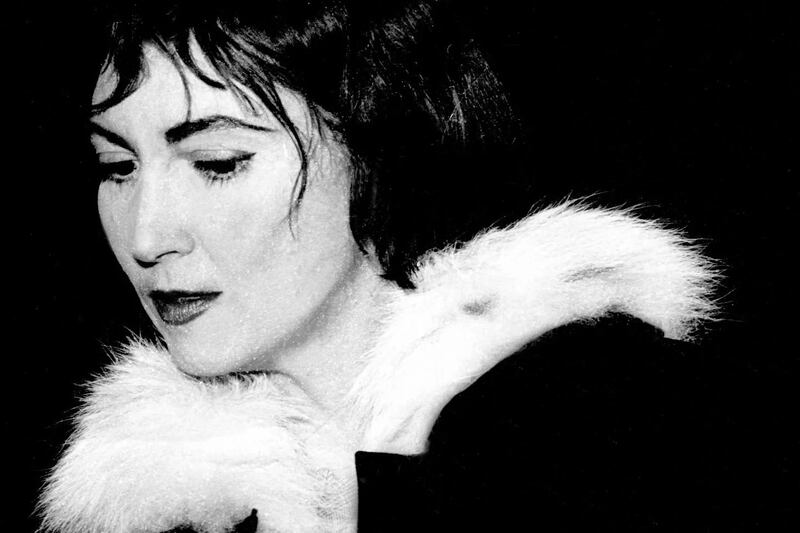Ireland was the scene of a series of curious musical record breaking attempts in the 1950s by an English woman who used the stage name “Musical Marie”. On each occasion, thousands turned out to witness the spectacle and cheer her on as she sought to set a new record for non-stop playing of the piano.
The attempts took place over several years in venues as far afield as Dublin, Dundalk, Cork and Limerick, as well as in the seaside resort town of Portrush in Co Antrim.
Born in Stretford, Manchester, her real name was Marie Ashton. Irish papers at the time described her as a “Catholic Manchester house-wife”. Many also noted her weight – 17 stone.
Her first Irish performance began in Dublin at the end of 1952. An advertisement placed in The Irish Times to publicise the unusual musical endurance test stated that Marie’s first attempt to break the record would commence at the Fun Palace on Burgh Quay on Monday, November 24th, 1952, at 7pm.
The night a ‘sputnik’ crash-landed in rural Wexford
‘A breakthrough in the case of my stolen Dublin Bike and the subsequent €150 fine’
A daisy with a doctorate? Frank McNally on the enrolment of ragwort in the rewilded lawns of Trinity College
Ballet Go Backwards – Frank McNally on Patrick Kavanagh’s short-lived career as a dance librettist
Describing her as the “first lady non-stop pianist in the world”, the advert stated that if successful she would finish at midnight on Sunday, November 30th. A Englishman named James Strickland, known as “Syncopating Sandy”, had played at the Fun Palace some time before Marie and she was trying to beat his record.
The following summer, Marie played in Portrush for 133 hours.
Local papers detailed how the 40-year-old musician sustained herself during the marathon session. The Strabane Chronicle noted that Marie consumed cereals, fruit juices, lettuce, eggs, and two gallons of tea.
She also smoked 150 cigarettes a day, according to the paper, which added that two girls were employed on 12-hour shifts brewing the tea to help keep her awake.
Later that year, in October 1953, Marie played at the Oriel Theatre in Dundalk. During her performance, which began at 10am on a Monday and ended at 11pm on the Saturday, well-wishers sent gifts of flowers, cigarettes, drinks and souvenirs to the theatre.
News of her achievement was greeted with applause after it was relayed by loudspeaker to the thousands who were gathered outside in Market Street. The crowd is thought to have been around 2,000 strong.
Marie ended the night by playing Faith of Our Fathers and Amhrán na bhFiann. She left just after midnight, retiring to her hotel.
In November 1953, she played at the Transport Union Hall (formerly the Catholic Institute Hall) on Limerick’s Sarsfield Street. She began at 11am on the Monday and hoped to continue playing until the following Saturday at midnight.
While her physical and psychological needs were being cared for by a team of professionals (including nurses, a physical instructor, and a hairdresser who came in each morning to do her hair), the Limerick Leader stated that after 96 hours Marie was “completely exhausted and falling asleep”.
However, the paper also said that she was determined to continue. She persisted and is reported to have been wrapped in rugs and wearing dark glasses, as she was watched by those who had paid in to see her. Admission was £1 for adults and six pence for children.
She ended up playing for 134 hours.
A crowd of “several thousand” congregated in the streets outside the Hall around midnight to coincide with the anticipated finish time. One witness estimated that between 5,000 and 6,000 had gathered there at that point to be part of the record-breaking attempt.
When Marie was finished, she was transported to the nearby Cruise’s Hotel by ambulance.
Such was the excitement among the crowd gathered outside that the hotel’s doors had to be closed and several cars parked in the street outside were damaged by those trying to get a glimpse of the charismatic record breaker.
Not everyone was pleased, however. At a meeting of Limerick Corporation afterwards, several members voiced their displeasure with some labelling it “most degrading” and a “positive disgrace”. It is not clear if the protests were aimed at Marie’s performance or the crowd’s exuberance afterwards. The mayor seemed to be particularly displeased when he reported that an estimated sum of between £1,000 and £1,400 was “taken out of the city”.
One of her last Irish appearances came in Cork in July 1959 when she played for 130 hours non-stop at the Central Hall on Academy Street. She ate with a fork in one hand while the other hand continued to play a tune.
Marie admitted that the only time she felt sleepy was in the final two hours and that the St John’s ambulance crew had a hard time trying to keep her awake in the end.
Crowds of well-wishers gathered in Emmet Place to support her and, as the deadline of 11pm approached, she asked them to sing the national anthem, a fitting end to her Irish musical odyssey.














